As the holy month comes to an end, chefs share lesser-known dishes found across the land

Representation pic
An intensely informative conversation with Delhi-based author and chef Sadaf Hussain steers to long-forgotten simple Ramzan foods. He had been ladling in lesser-known offerings from regional community kitchens such as gooler kebab, rajma aur kela kebab, do goshta biryani, and our very favourite, benami kheer, made with, wait for it—garlic—at Masala Bay in Taj Lands End earlier this month.
Back home in the capital, after a long day of fasting, Hussain looks forward to kheema or egg bhurji-filled samosas and pakoras (phulkis, as they are called in the North). “Chana dal pakoras, deep fried to golden brown… I can easily polish off 10 to 12 in one go,” he says, “Then a glass of Roohafza with milk, and I’m happy. Some days, I dilute it with water and a dash of lemon. Kebabs are an all-time favourite. Everything about them is so special—the flavour, coming together of spices and textures. They are so simple to make and yet so complex because of the intricacy of the recipes.”
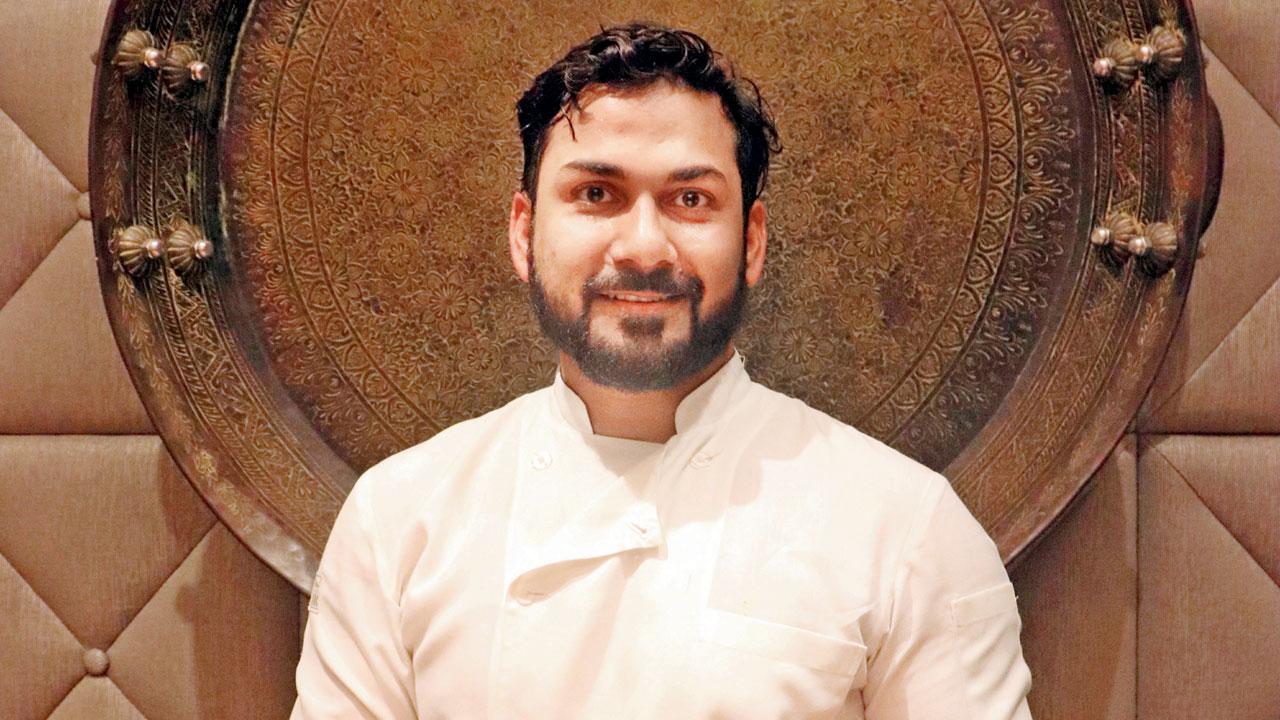
Sadaf Hussain
Hussain’s favourite is the Bihari boti kebab because, “It’s spicy, it’s rustic, has the bite of a boti and a distinct melt-in-the-mouth texture, but quite unlike the galouti kebab. Pasanda, a prime cut of meat is used in the recipe. No one uses the cut these days—it’s all about the boti [chunks]. The other sharp taste comes from the use of sattu instead of besan as a binder, and that of desiccated coconut and poppy seeds. Fun fact—it’s not called Bihari kebab in Bihar, just kebab.”
The recipe shared here is an heirloom one, made by the chef’s mother and nani and it brings back memories of Bakri Eid when the makeshift sigdi was brought to the aangan of his ancestral home, and eight to 10 kg of marinated meat was charred on coal. “We’d eat it fresh off the skewers,” he reminisces, “carefully scraping the tender droppings off the coal. The house would be filled with smoke and all of us would sit next to the sigdi with pyaz and nimbu, and have the kebabs without roti or naan—pure indulgence.”
You’ll find the best kebabs in Gaya, Sasaram, Patna (at Sabzibagh bazar, in particular),Jamshedpur and Ranchi. “I’ve had it in Delhi, but it was made with boti,” he says. “The flavour was similar, but the texture was disappointing—it wasn’t made from pasanda,” he adds.
Bihari boti kebab
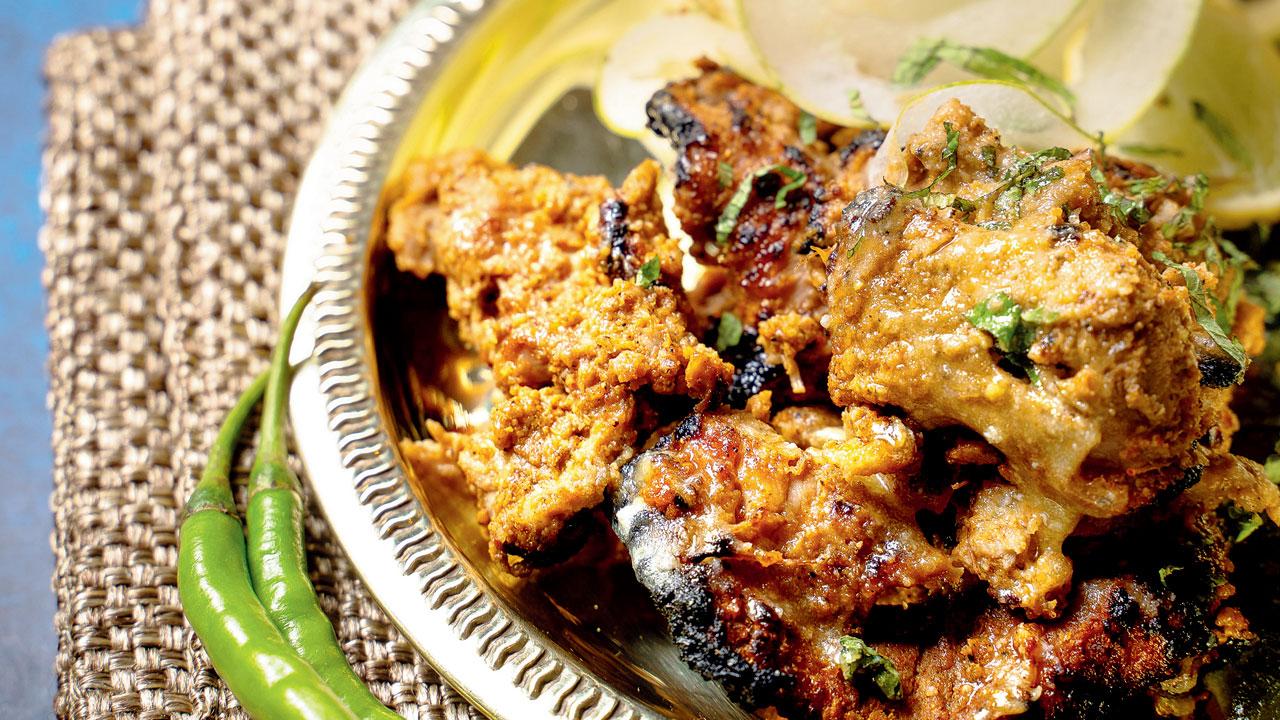
Garam masala
12 dried red chillies
10 green cardamoms
6 large black cardamoms
2 star anise
2 cloves
2 tbsp whole coriander seeds
2 tbsp cumin seeds
4 tsp whole black peppercorns
2 tsp kebabchini
2 tsp fennel
1 tsp mace
1/2 tsp nutmeg
2 tsp poppy seeds
For the kebabs
11/2 kg chunks of lamb, thinly sliced and pounded (pasanda or parcha)
3/4 cup curd
3/4 cup finely grated raw papaya, with skin
3/4 cup fried onions
3/4 cup mustard oil
4 tsp ginger, freshly grated
4 tsp garlic, chopped
4 tsp Bihari kebab garam masala (above)
2 tsp red chilli powder, or as per taste
11/2 tsp cumin powder, roasted
1 tsp nutmeg powder
1 tsp cinnamon powder
3-4 tbsp sattu
50 gm dried, desiccated coconut
Salt to taste
Method
In a hot pan, dry roast all the whole spices, then add desiccated coconut. Roast till aromatic. Grind to a fine powder; the garam masala is ready. In a clean bowl, add all the other ingredients, oil and four teaspoons of garam masala. Mix to a smooth paste and massage it properly onto the meat. Let the meat marinate for at least 10-12 hours. Skewer the meat grill on an open flame, brushing with ghee at regular intervals till the kebabs are cooked. If you don’t have a barbeque, grill the kebabs on a normal pan. Serve with wedges of lemon, onion slices and green chutney.
Chef Sohail Karimi breaks his fast with dates, chilled water and cold watermelon wedges, followed by golden crispy onion pakodas dipped in spicy, tangy, green coriander and mint chutney. Then it’s time for mutton harees—a nutritious dish made with wheat and protein—with crispy tandoori roti, washed down with a honeydew melon and dates juice.
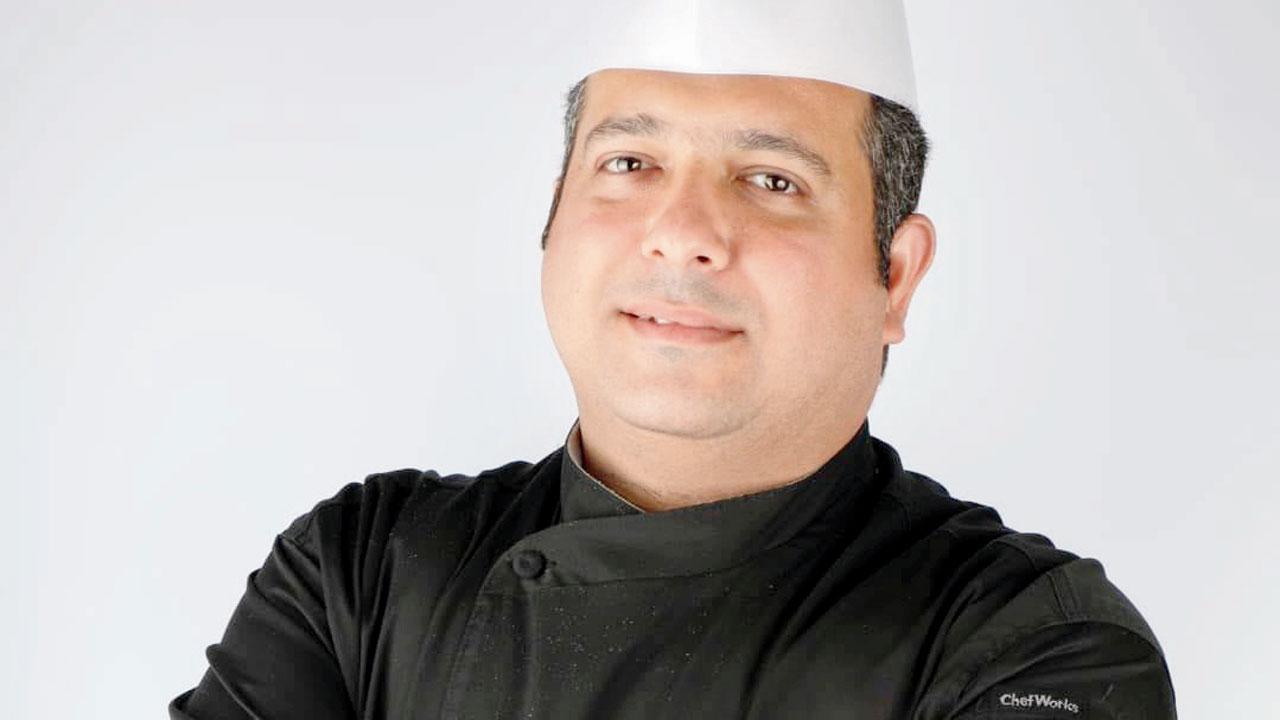
Sohail Karimi
Topped with clarified butter or ghee, and garnished with crispy golden fried onion and a wedge of lemon wedge, harees is what Karimi’s Ramzan and Eid dreams are made of. It is considered the mother dish of the Levant region: haleem and khichda are different versions of it. The Chaush community of Hyderabad is credited with bringing this, along with other culinary jewels, from their ancestral seat in the Hadramaut region of Yemen-South Arabia.
“Harees is a complete meal by itself,” says the executive chef of Radisson Blu Resort and Spa in Karjat, “A mixture of dried broken wheat kernels, meat and spices, it is traditionally slow-cooked on a stove, then placed in a brick oven or cooking pit for several more hours until the mixture turns soft. It is hand-blended using a wooden beater [ghotni] to get a pudding-like texture. The credit for a well-prepared harees goes to the person who has beaten the mixture.” Here’s the chef’s grandmother’s recipe.
Shahi harees
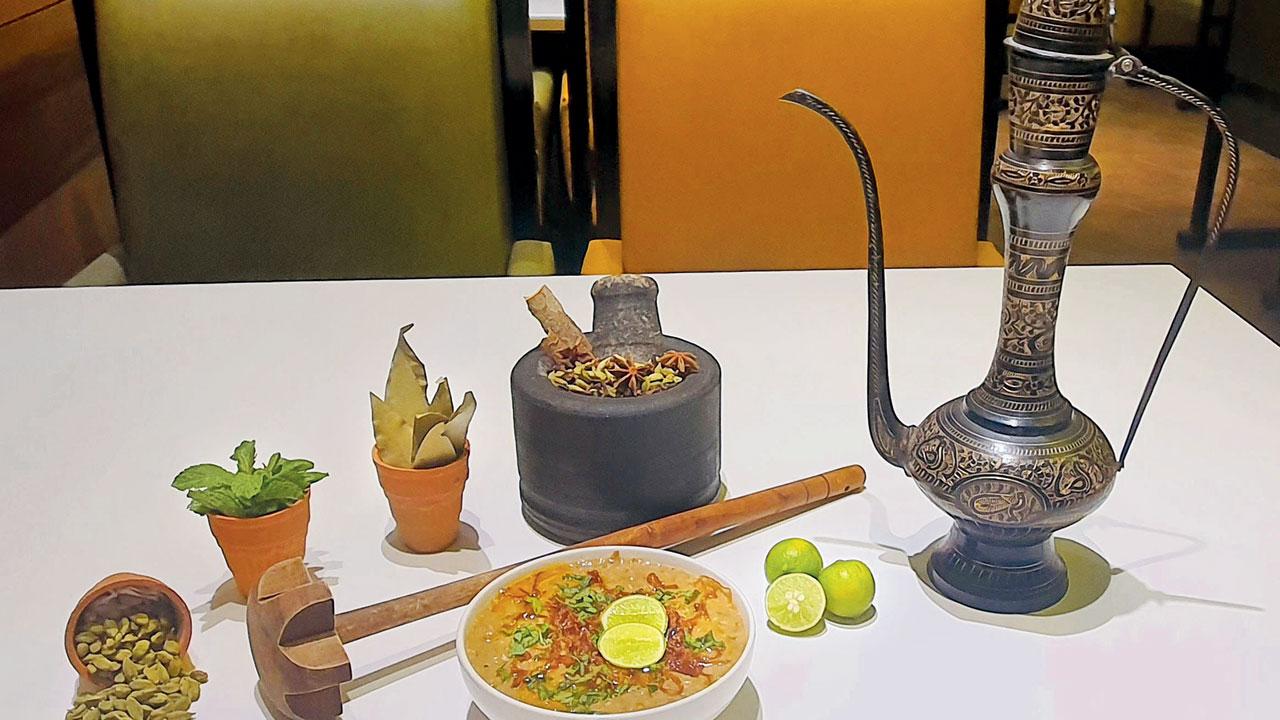
Ingredients
Base
400 gm broken wheat
4 tbsp oats
2 tbsp yellow moong dal
2 tbsp urad dal
4 tbsp barley
2 tbsp toor dal
10 almonds
10 cashew nuts
Wash and soak for a minimum of six hours, and drain.
Special garam masala
50 gm shah jeera
50 gm green cardamon
50 gm clove
50 gm cinnamon stick
Dry roast and grind to a fine powder
For the meat
600 gm mutton leg (raan); 100 gm mutton fat
200 gm ginger garlic paste 2 tbsp green chilli paste
180 gm curd
1 tsp white pepper powder
1 tsp red chilli powder
1/2 tsp turmeric powder
1 tsp special garam masala
1 tsp lemon juice
Salt to taste
Other ingredients
5 cloves
30 gm shah jeera
10 black peppercorns
1-inch cinnamon stick
3 green cardamoms
300 gm ghee (200 gm for cooking + 100 gm for garnish)
3 tbsp chopped mint leaves
3 tbsp chopped coriander leaves
100 gm onion, fried till golden
Lemon juice or powder of dry black lemon
Method
Cut the mutton leg into large chunks. Wash the meat and fats and strain to remove excess water. Massage with masala and marinate for a few minutes. Heat 200 gm of ghee in a heavy-bottomed pot, and add whole spices. Once they begging to crackle, slip in the marinated chunks of mutton and fat. Sauté on high flame for 10 to 12 minutes, and add enough water to cover the meat and let simmer. When it comes to a boil, lower the flame, cover the pot and cook it till the meat leaves the bones. Then, extract the bones and add the soaked lentils and nuts mixture to the pot. Now comes the chopped coriander and mint leaves, golden fried onion and salt. Cook till lentils are mushy. Turn off the flame and whip the mixture till the meat and lentils are mixed, and pound to get a pudding-like texture. Pour into wide bowls, and garnish with ghee, golden-fried onions, chopped mint leaves and lemon wedges.
Pune-based Kashmiri chef Zahoor Mir’s favourite Ramzan food is seekh kebab, which he loves to chase with nimbu pani with babribyol (basil seeds) for instant energy. The holy month reminds him of the lesser-known dishes of wazwan (a Kashmiri multi-course meal served at weddings) such as gogji rajma, mutton alubukhara korma, waaz heddar, palak rista, mashe kebab, mutton badam korma, and lahabi kebab, many of which are served at his Baner restaurant Chinar—With Love, From Kashmir.
“Being away from home,” he says, “I crave rista and gushtaba made by a waaza [chef] on a wood fire. That taste cannot be replicated by even the greatest chef in the world. My mouth waters just at the thought of the fragrance of spices lingering in the air against the backdrop of the snow-capped mountains of my village, Boniyar. Then there’s our gucchi pulao, made with morel mushrooms, an expensive delicacy with an umami and earthy flavour.” He adds that his heart also ache for dishes such as shab deg, a lost winter recipe cooked overnight with turnips, mutton and Kashmiri spices.
Gucchi pulao

1/2 cup basmati rice
25 gm dried gucchi (morel mushroom)
60 gm anar seeds
1-inch cinnamon stick
5-6 cloves
5-6 cardamom
1-2 bay leaves
1 onion, sliced
100 gm mozzarella cheese
100 gm ghee
1/2 tsp jeera
Handful of cashew nuts (optional)
Method
Wash and soak basmati rice for 30 minutes. Soak morel mushrooms to clean and rehydrate them and wash them until the water runs clean. Mix grated mozzarella cheese and anar seeds, and sprinkle some salt. Stuff morel with this and stir fry them in ghee for about 30 seconds. Keep aside. In the same ghee, fry onions, cinnamon, elaichi, cloves, jeera and bay leaf. Once onions are translucent, add rice and the water it was soaked in, with salt. When it’s 80 per cent done, add the stir-fried morels. Check to season and cook till rice is completely cooked. Garnish with cashews, anar dana and fresh coriander. Serve hot with raita.
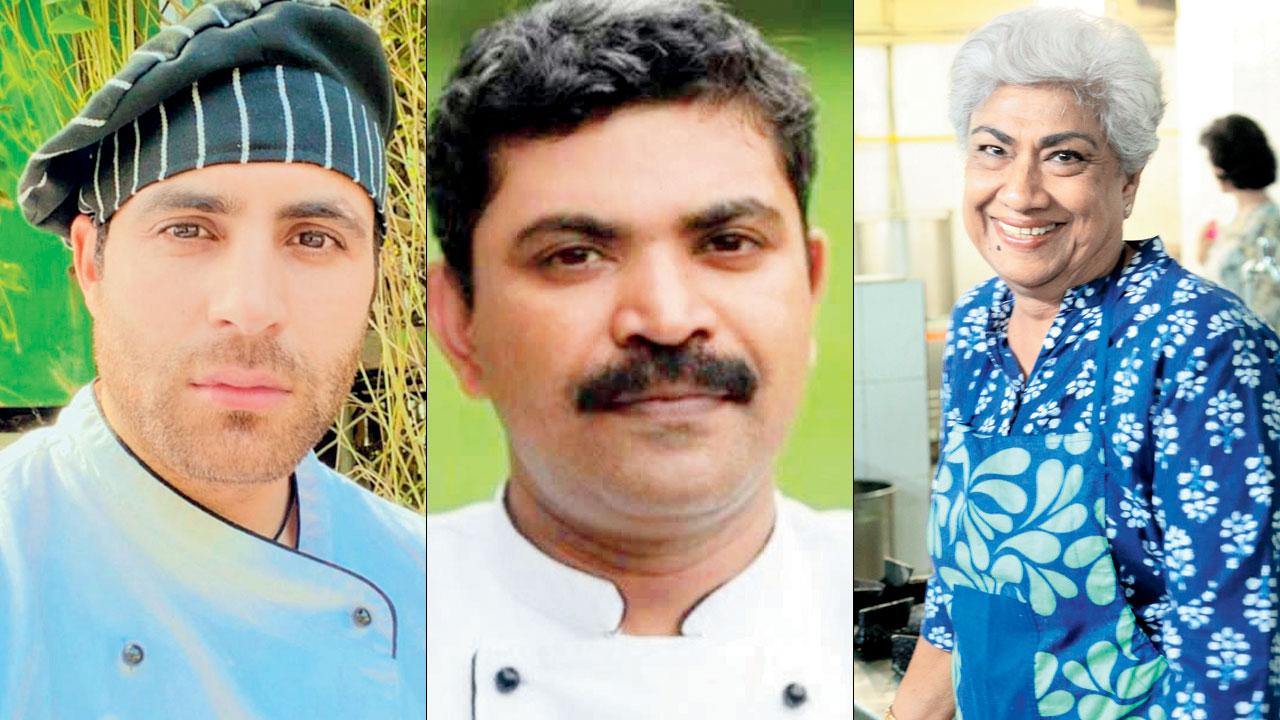
Zaheer Mir, Babu Abdulla and Iti Misra
Culinary consultant Iti Mishra’s iftar memories are made of unusual dishes she has had at her friends’ homes in Kolkata and Surat. “Bonda is a popular iftar item in Surat,” says Misra, adding, “Boiled whole channa dal and minced meat, seasoned with coriander, green chillies and spices, are combined and shaped into ball [hence, bonda], dipped into a flour batter whipped with baking soda, and deep-fried. So you have a crisp and fluffy casing with the channa dal and keema. Then there’s lukma, very fine minced meat [almost like a paste] mixed with spices and herbs, mint, parsley and coriander, packed into pastry squares, sealed and fried.” It’s a version of the samosa, but in small squares with a kebab-like filling.”
“Another favourite is version of Bunny Chow,” she says, “that I’ve had at a family friend’s home who has connections with South Africa. In this version, small loaves of bread, like paos are scooped out, and filled with spicy curried meat or chicken. The lid is closed and the small loaves are dipped in egg and deep-fried. It’s a filled French toast of sorts. In addition, the Bengalis also do kachori and alur dom during this time.”
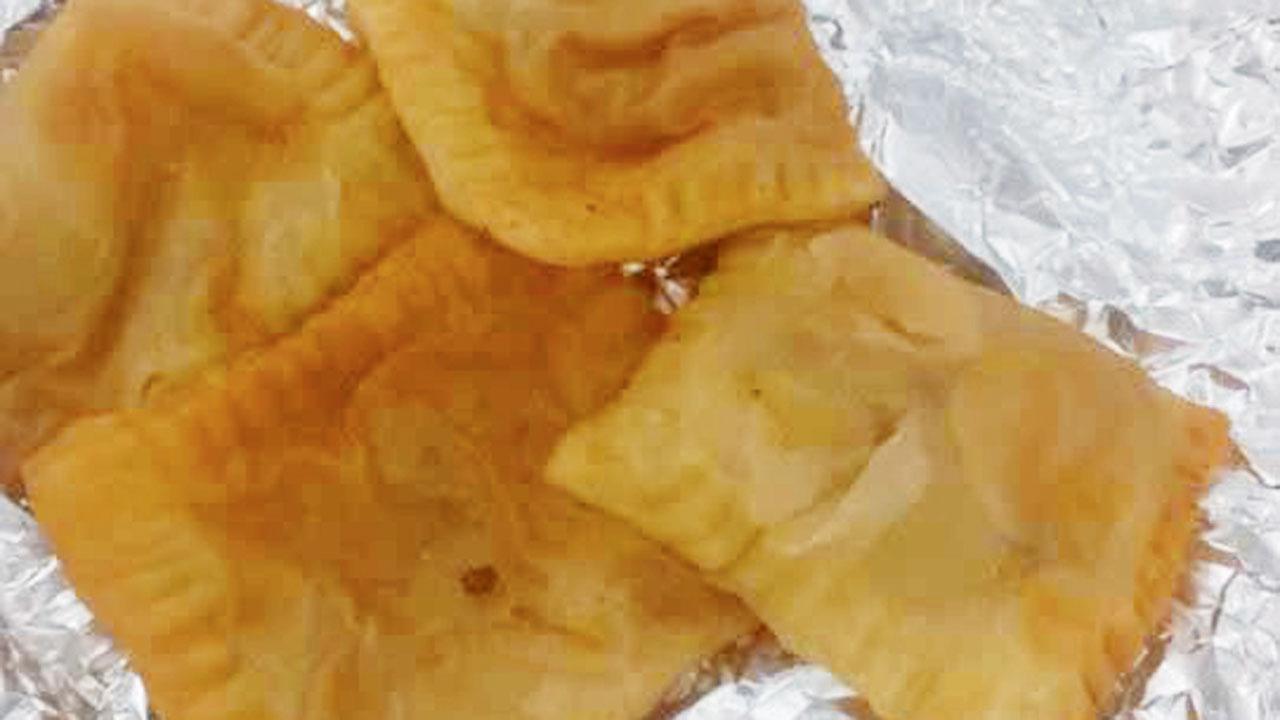 Luqma
Luqma
Of southern celebrations, Chef Babu Abdullah , Executive Chef, The Gateway, Calicut tells us of muthari sherbet made from ragi extract, palm sugar, coconut milk, and green cardamom. He tasted this unique cooler at a food festival conducted by Ummi Abdulla, the doyen of Moplah cuisine (from northern Kerala). Pal vazhakkai, a unique recipe from the region combines nendran banana, sago pearls and coconut milk, and is flavoured with a hint of freshly ground green cardamom. “Though the original recipe uses only the first and second extracts of coconut milk, a variation of pal vazhakka using an equal amount of reduced milk is quite popular,” says Abdullah.
Other dish that he speaks fondly of is unnakaya made of Kerala plantains, grated coconut, cardamom powder, cashew nuts, and red raisins. “Unnakaya translates to Unnam and kaya or cotton pods in the local dialect,” he explains. “The dish gets its name from the shape of cotton pods. Traditionally the filling contains sweetened scrambled eggs, flavoured with cardamom and enriched with desi ghee, cashew nuts and red sultana. Here is a more popular, vegetarian version.
Unnakaya

Ingredients
400 gm nendran bananas (under-ripe)
1 cup grated coconut
1 tbsp cashew nuts, broken
1 tbsp red raisins
1 tbsp sugar
1 tbsp ghee
1/2 tsp cardamom powder
Refined sunflower oil to deep fry
Method
Steam the bananas until well cooked. Remove the skin and mash well. Set aside. Heat ghee in a non-stick pan, and fry the cashew nut and raisins until golden. Switch off the gas and add grated coconut, sugar and cardamom powder. Mix well to combine. Divide the mashed banana into nine equal-sized balls. Make a dent in the middle of each and stuff it with a tablespoon of the filling. Close the well, and shape balls into three to four-inch long oblongs (like a cotton pod). Deep fry until golden brown. Serve hot.
 Subscribe today by clicking the link and stay updated with the latest news!" Click here!
Subscribe today by clicking the link and stay updated with the latest news!" Click here!










